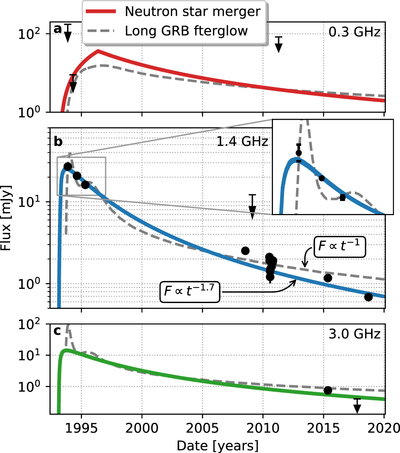Image Details

Caption: Figure 2.
Observational data for FIRST J1419+3940 and best-fit radio light curves. The solid lines show our best fit for a neutron star merger ejecta model for 0.3 GHz (a), 1.4 GHz (b), and 3 GHz (c) radio frequencies. For comparison we show the best-fit model of Law et al. (2018), who assumed that the source is an off-axis GRB afterglow (dashed line). The inset shows the early emission period at 1.4 GHz, indicating that radio emission steadily decreased with time, as expected from a neutron star merger scenario. The double-peaked fit for off-axis GRB afterglows less adequately explains the data. The late temporal decay of the radio flux is characteristic of our expectations from the neutron star merger (F ∝ t−1.7), compared to the shallower decay from afterglows (F ∝ t−1).
Copyright and Terms & Conditions
© 2020. The American Astronomical Society. All rights reserved.




